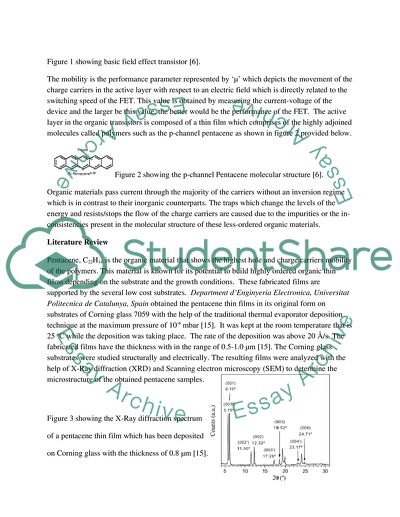Cite this document
(“PENTACENE BASED ORGANIC MIS STRUCTURES: STRUCTURAL ANALYSIS AND Essay”, n.d.)
PENTACENE BASED ORGANIC MIS STRUCTURES: STRUCTURAL ANALYSIS AND Essay. Retrieved from https://studentshare.org/miscellaneous/1568130-pentacene-based-organic-mis-structures-structural-analysis-and-electrical-properties
PENTACENE BASED ORGANIC MIS STRUCTURES: STRUCTURAL ANALYSIS AND Essay. Retrieved from https://studentshare.org/miscellaneous/1568130-pentacene-based-organic-mis-structures-structural-analysis-and-electrical-properties
(PENTACENE BASED ORGANIC MIS STRUCTURES: STRUCTURAL ANALYSIS AND Essay)
PENTACENE BASED ORGANIC MIS STRUCTURES: STRUCTURAL ANALYSIS AND Essay. https://studentshare.org/miscellaneous/1568130-pentacene-based-organic-mis-structures-structural-analysis-and-electrical-properties.
PENTACENE BASED ORGANIC MIS STRUCTURES: STRUCTURAL ANALYSIS AND Essay. https://studentshare.org/miscellaneous/1568130-pentacene-based-organic-mis-structures-structural-analysis-and-electrical-properties.
“PENTACENE BASED ORGANIC MIS STRUCTURES: STRUCTURAL ANALYSIS AND Essay”, n.d. https://studentshare.org/miscellaneous/1568130-pentacene-based-organic-mis-structures-structural-analysis-and-electrical-properties.


